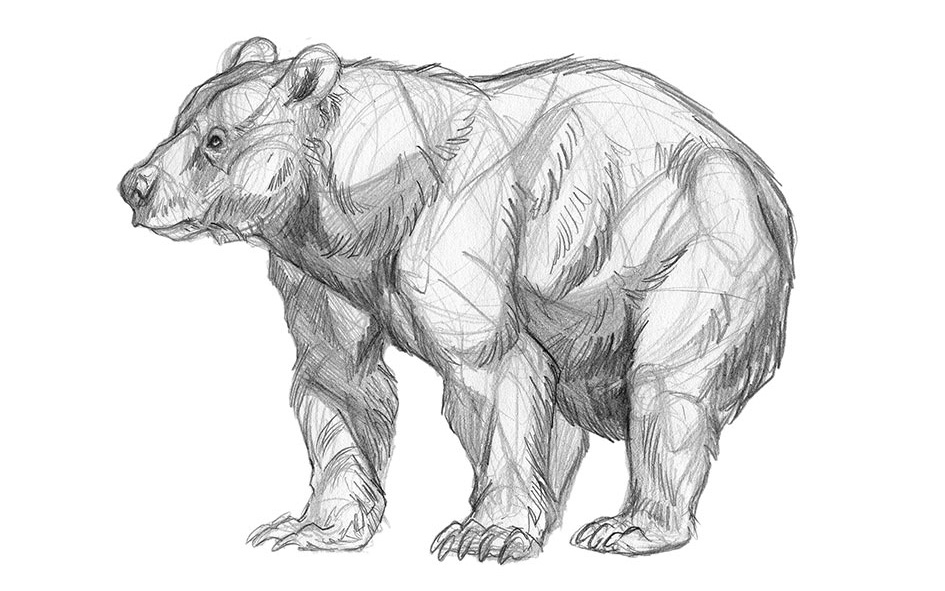How to draw a bear in 5 simple steps
Learn how to draw a bear with these expert techniques.

Need to learn how to draw a bear? You're in the right place. This step-by-step guide will break down the process into straightforward chunks, to make things easy. Learning how to draw anatomically correct, realistic looking animals – bears included – can provide plenty of inspiration that can be incorporated into your artwork. So even if you don't need to draw a bear right now, there's plenty to learn here.
For more easy to follow tutorials, take a look at our roundup of how-to articles on how to draw animals.
In this tutorial, we're going to start by working quickly and using broad, light pencil marks to find the animal's gesture. This is especially key when drawing from life, where animals move about as you draw. So, get your best pencils at the ready as we reveal how to draw a bear in five simple steps.
01. Start with a light sketch

Begin with a light sketch. We don't want to make any solid marks or bold lines yet; at this stage we're just finding the shapes of the animal's form. Keep your arm loose and move quickly – this is the messy stage! It's a good idea to break this initial sketch into a wire skeleton and basic shapes to start. This is the foundation of your study.
02. Draw through forms

Begin to build up my drawing. In this step we want to draw through forms – this means you shouldn't be worried about different body parts covering each other, but pretend to see through them. This helps to keep the drawing fluid and help you stay aware of where forms are overlapping in space. Look for skeletal landmarks such as the scapula and knee caps, to help locate the anatomy of the animal as it develops on the paper. Build up the form with repetitive, fluid strokes to keep the drawing full of motion.
03. Find the muscle groups

The next step is to locate a variety of different muscle groups based on both previous studies and memory. However, you want to make sure you really look at your subject so as not to make assumptions and miss out on what's actually in front of you. Locating the joints and major muscle groups can help with fur placement and rendering later on. In this step, having some experience in drawing real-life animals can help.
04. Introduce form and value

Now you've got a solid blueprint in place, you can begin to add in some quick values. In this example there's an imagined light source above the bear. This stage is where softer leads come in handy. Use a B or softer to draw in those lines and flesh out the forms of the muscle groups.
05. Flesh out details

Now it's time to suggest a few details here and there. When it comes to adding fur, do so in relation to where the muscle groups sit in order to stop the animal from looking flat. Every animal has a different set of proportions and small details that make that species unique, and every species has unique individuals. It's important to pay attention and really see what's there. Add in markings or any other distinguishing textures or features in this step.
Related articles:
- Everything you need to know about tonal values
- How to design believable fantasy beasts
- How to draw a wolf
Daily design news, reviews, how-tos and more, as picked by the editors.

Brynn Metheney specialises in creature design, fantasy illustration and visual development for film, games and publishing. She lives and works in Oakland, California.
